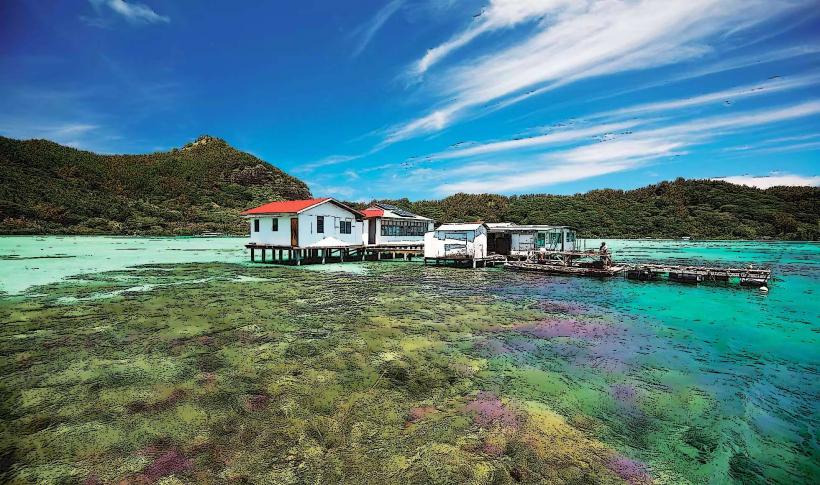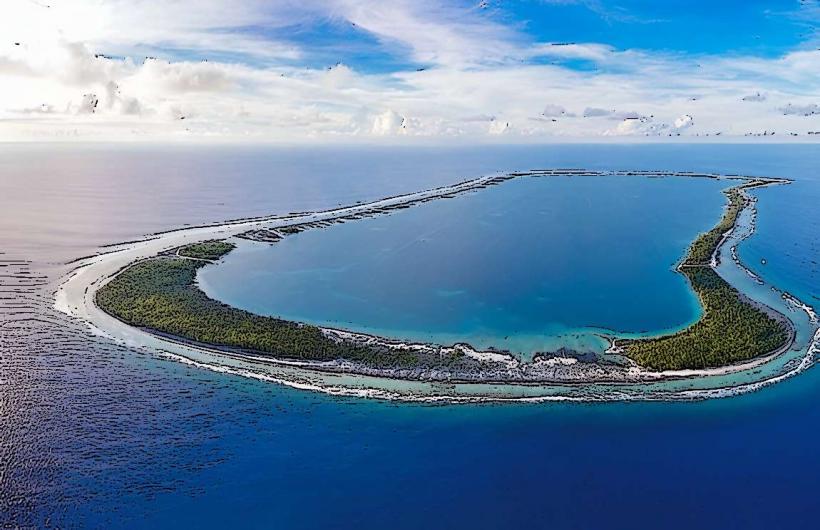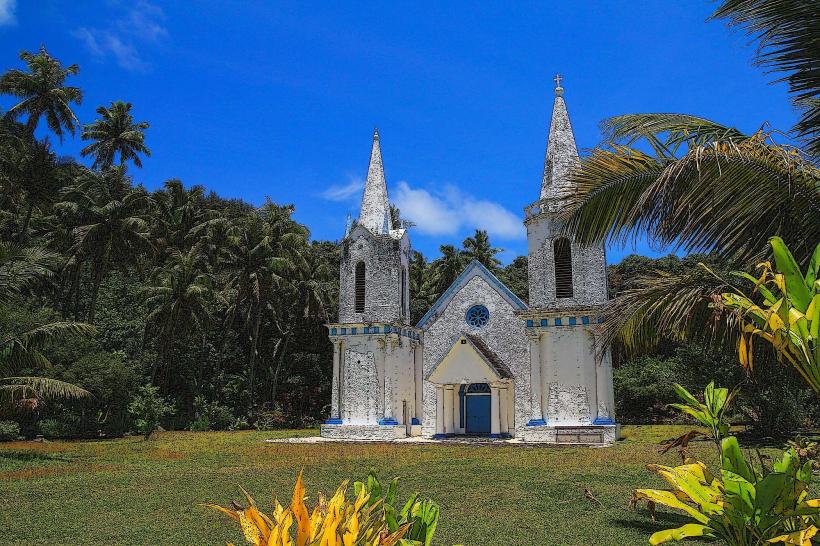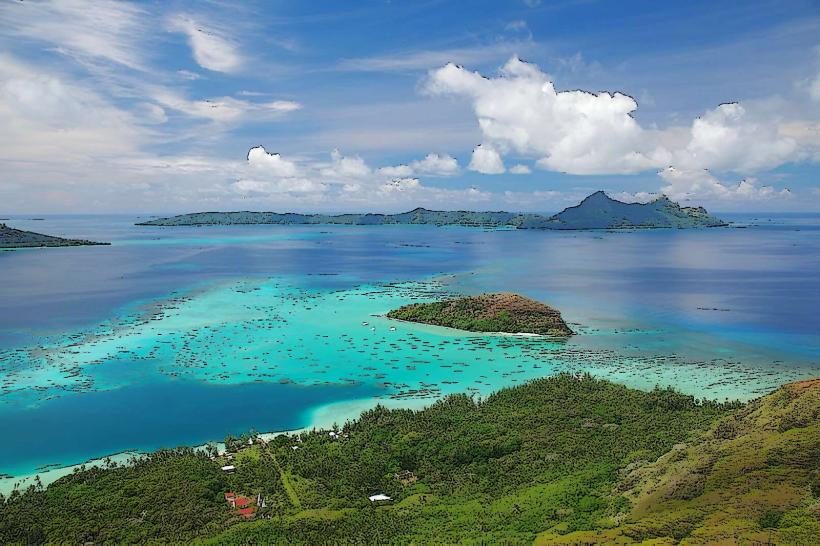Information
Landmark: Mangareva IslandCity: Gambier Islands
Country: French Polynesia
Continent: Australia
Mangareva Island is the largest island in the Gambier Archipelago, located in the southern Pacific Ocean, part of French Polynesia. This island, along with its surrounding islets, holds great historical, cultural, and natural significance in the region. Known for its lush landscapes, rich history, and unique cultural heritage, Mangareva offers visitors a fascinating glimpse into the traditions and natural beauty of Polynesia.
Key Features of Mangareva Island:
Geography and Natural Environment:
- Mangareva is a volcanic island with a dramatic landscape of mountainous ridges, lush valleys, and dense tropical forests. The island is encircled by a large lagoon, and its clear waters are home to vibrant coral reefs and abundant marine life, making it a haven for snorkelers and divers.
- The island's highest peak, Mt. Duff (also known as Te Tiare), rises to an elevation of about 441 meters (1,447 feet), offering stunning views of the island and the surrounding ocean. This peak is surrounded by fertile valleys, and the landscape is dotted with coconut palms, breadfruit trees, and other tropical flora.
Cultural Significance:
- Mangareva holds a significant place in the cultural history of Polynesia, particularly for its role as a center of Christianity in the region. In the early 19th century, French Catholic missionaries arrived on the island, and Mangareva became an important hub for missionary activity in the Gambier Archipelago.
- The island is home to a unique Polynesian culture, blending traditional and Christian influences. One of the most distinctive features of Mangareva is the preservation of its traditional Polynesian language and customs, despite centuries of external influences.
Historical Sites:
- Mangareva has several historic landmarks, particularly related to its Christian heritage. The island's most famous site is the St. Michael's Cathedral in the village of Rikitea, built by the missionaries in the 19th century. The cathedral is an iconic structure with beautiful wooden carvings and historical significance.
- The island is also home to numerous archaeological sites, such as marae (sacred ceremonial platforms), petroglyphs, and stone structures that reflect the island’s pre-European Polynesian culture. These sites offer insight into the ancient religious practices, social organization, and maritime culture of the early Polynesians.
Economy and Agriculture:
- The economy of Mangareva is largely based on subsistence farming, fishing, and coconut production. The island’s fertile soil allows for the cultivation of a variety of crops, including breadfruit, bananas, coconuts, and taro.
- Fishing is an important industry, with the surrounding lagoon providing an abundance of fish, shellfish, and seaweed. The island's waters are also a popular destination for diving and snorkeling, thanks to their clarity and rich marine biodiversity.
Population and Communities:
- Mangareva has a small population, with the majority of the inhabitants residing in the village of Rikitea, the island's main settlement. Rikitea serves as the economic, cultural, and administrative center of the island.
- The island’s population is deeply connected to its cultural heritage and maintains a strong community spirit. Local customs and traditional Polynesian values play an important role in everyday life, including in social gatherings, festivals, and the island’s oral history.
Tourism and Accessibility:
- Mangareva is not as well-known as other tourist destinations in French Polynesia, such as Tahiti or the Marquesas Islands, but it offers a peaceful and remote setting for visitors seeking a more tranquil experience. The island’s unique cultural heritage and beautiful natural environment make it a fascinating destination for those interested in ecotourism and cultural exploration.
- Visitors to Mangareva can explore the island’s historic sites, hike the island’s mountain trails, and enjoy the crystal-clear waters of the lagoon. Additionally, the island offers a chance to experience authentic Polynesian culture through local crafts, food, and traditional performances.
Marine Life and Conservation:
- The lagoon surrounding Mangareva is a protected marine area, and the waters are teeming with marine life, including various species of fish, sea turtles, and coral reefs. The island's clear, warm waters make it a great place for snorkeling and scuba diving, with many visitors coming to see the marine biodiversity up close.
- Conservation efforts are ongoing to protect the fragile ecosystem of the Gambier Archipelago, including initiatives to protect the island's coral reefs and marine species from overfishing and climate change.
Best Time to Visit:
- The best time to visit Mangareva is during the dry season (from May to October), when the weather is pleasant and ideal for outdoor activities like hiking, diving, and exploring the island's natural beauty. The wet season (from November to April) brings more rainfall, but it is also a time when the island’s lush vegetation is at its fullest.
Conclusion:
Mangareva Island is a hidden gem in the Gambier Archipelago, offering a unique blend of cultural heritage, natural beauty, and historical significance. From its volcanic landscapes and marine biodiversity to its Christian landmarks and Polynesian traditions, Mangareva offers a peaceful escape for those looking to experience the authentic spirit of French Polynesia. Whether you're interested in hiking, exploring ancient sites, or simply relaxing in a tranquil setting, Mangareva is a fascinating destination off the beaten path.






